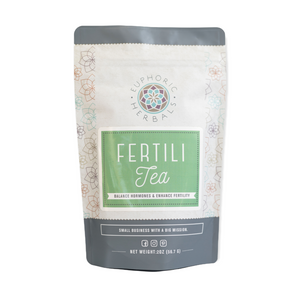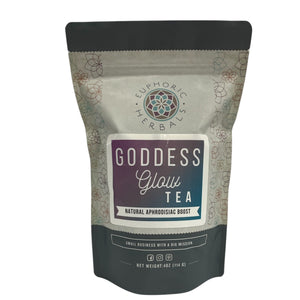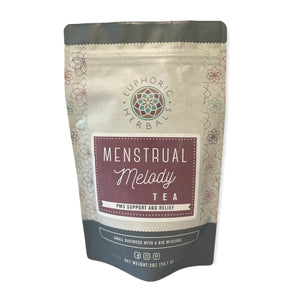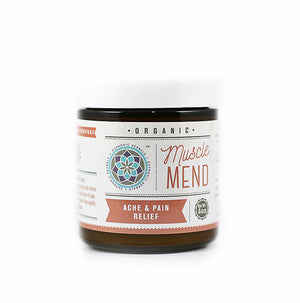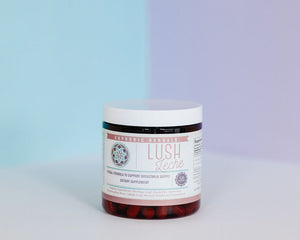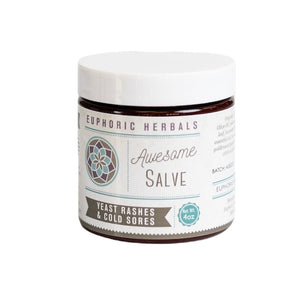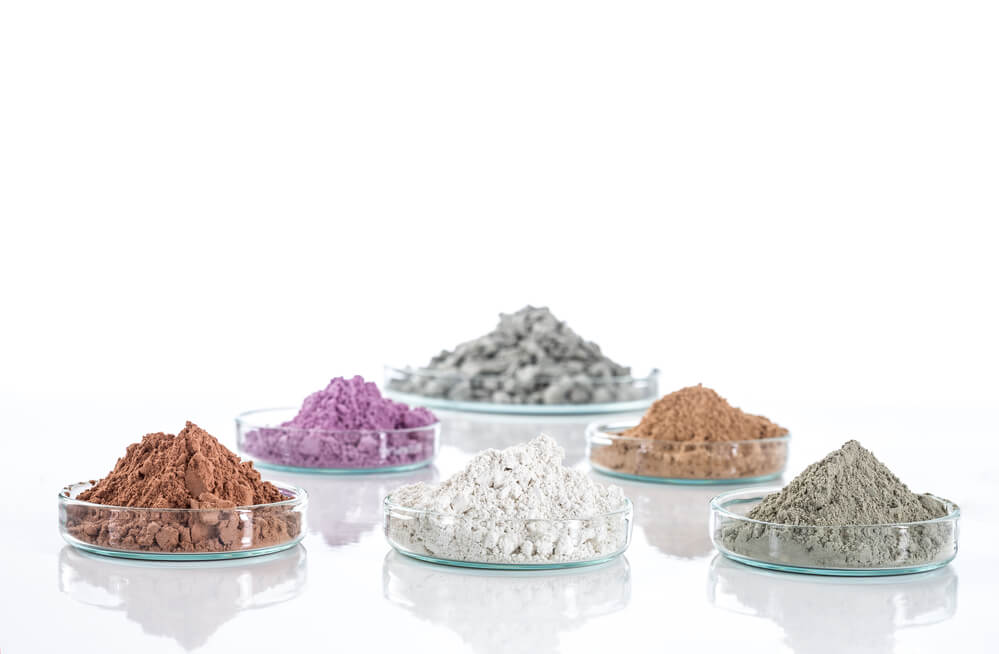Clay is a natural substance that has been used for thousands of years for beauty and health. It's an age-old ingredient in skincare formulas and frequently used in medicinal applications.
Rich in minerals, clay comes from the earth and is made up of tiny particles that have been worn down over time. Clay is mainly a product of volcanic ash that has been weathered physically and chemically until it has completely broken down. Different types of clays have different parent materials and their own unique properties.
Here are some of the top benefits of clay for both your skin and health, plus the main types of clay and how to use them.
Benefits of Clay for Skin & Hair
Balances & Combats Oily Skin
Clay has strong drawing properties and is very absorbent. When used in a mask for your skin, clay can remove excess oil and help to balance out your skin's oil production. This effect will be stronger or milder depending on which type you use.
Red clay is one of the most drying clays. It would be a good choice if you struggle with very oily skin, but not if you have dry skin. White clay, on the other hand, is much milder and can be used on both oily and dry skin. Bentonite falls in between and would be a good choice if you have normal to oily skin.
Unclogs Pores and May Help Acne
The drawing nature of clay helps to unclog pores by pulling out dirt, toxins, and oil. This can help to prevent blackheads and whiteheads as well as mild forms of acne. (1) Applying a mask made with clay and warm water will help your pores to open up even more so that the clay can unclog them.
Combine it with other herbs, essential oils, and natural acne remedies for a greater effect.
Soothes Itchy Skin and Rashes
Clay has benefits for soothing all types of itchy skin. Herbalist Rosemary Gladstar recommends red clay for poison ivy, poison oak, and rashes due to its strong drawing properties. (Rosemary Gladstar. Herbal Recipes for Vibrant Health, pg. 121)
Some studies indicate that bentonite clay can also be effective for poison ivy and poison oak if applied immediately after contact. Other research has shown that it can be effective for treating diaper rash and other kinds of infant dermatitis. (2)(3)
You can try a paste made with clay for eczema, bug bites, stings, and other skin irritations.
Detoxifies Skin

Clay can pull impurities and toxins out of your skin right along with dirt and oil. You can take advantage of this in a face mask or use it to detox places like your armpits or feet. It also has deodorizing properties, which is a plus!
One of the most popular ways to use it is in a detox bath that will help to both cleanse and soften your skin.
Absorbs Oil from Hair
Using clay as part of a DIY dry shampoo is a great way to absorb extra oil off your hair when you don't have time to wash it. If you have blonde or light colored hair, use white clay. Rhassoul clay, which is brownish in color, is best for darker hair, and red clay for red hair (of course).
You can also try making a hair mask with clay to cleanse, soften, and make your hair shine.
Benefits of Clay for Health
Internal Cleansing and Detoxifying
The ability of clay to bind to toxins and carry them out of your body is one of its most studied benefits. It has been shown to bind to specific toxins called aflatoxins that can cause cancer. One study, in particular, found that montmorillonite clay significantly reduced the number of aflatoxins in the urine of children from Ghana with no adverse effects. (3)(4)
The ability of clay to bind to harmful toxins is thought to happen because it gains a negative electrical charge when hydrated with a liquid. Many heavy metals and toxins have positive charges. This allows the clay particles to hold them and take them out of your body.
Aids Digestion
The detoxifying nature of clay is the main way it aids digestion. By getting rid of toxins that may be causing problems, your digestive system becomes healthier. Clay has been used to treat digestive disorders like diarrhea, gas, bloating, and IBS with constipation. (3)
Some women also use it for morning sickness and vomiting during pregnancy.
Contains Healthy Minerals
One of the best things about taking clay internally is that it's a rich source of minerals. Clay is not a harsh or depleting detoxifier. It releases minerals to your body even as it binds to toxins and other impurities. Certain types of clay can be very beneficial for those who could use some extra minerals.
The specific minerals contained in clay depend on what type it is and where it was sourced from.
Supports Healthy Teeth

Because it can bind to toxins, clay promotes oral health when used in a toothpaste or mouth rinse. It helps to clean teeth and carry away particles and impurities. The mineral content of clay is also good for a remineralizing formula for your teeth.
Types of Clay
No two clays are exactly alike because they each have unique properties that come from where they originated and the weathering process that formed them. However, there are a few main types that have distinctive properties. Here's a little about each.
Bentonite Clay
Bentonite is one of the most popular and well-recognized types of clay. It has a multitude of uses both inside and outside your body and is often the clay preferred for detoxing purposes.
Bentonite clay is made of volcanic ash. The name comes from the town of Fort Benton, Montana, where one of the largest deposits of this type of clay can be found. It also goes by the name of montmorillonite clay, which is a reference to the Montmorillon region of France where the clay was first discovered.
There are many minerals in bentonite clay, including magnesium, silica, calcium, sodium, iron, potassium, and copper. Calcium bentonite is usually the recommended choice for internal and external applications. Another type, sodium bentonite, has many industrial uses and can be used externally.
Green Clay
Green clay (sometimes called French green clay) is rich in plant material as well as volcanic matter. The decomposed plant material is responsible for the soft, green color of the clay.
You can use green clay both internally and externally, and it's mild enough to be used on most skin types. It makes a great face mask and contains minerals like zinc, magnesium, calcium, selenium, potassium, copper, and iron.
White Clay (Kaolin)
White clay (also called kaolin clay) is a very fine and lightweight clay suitable for all kinds of cosmetic purposes. It's milder and less drying than other types like bentonite or red clay and the best choice if you have sensitive skin.
You can use it to exfoliate, cleanse, make a face mask, and much more. White clay is not used internally.
Red and Rhassoul Clay

Rhassoul clay and red clay have similar properties. They both have powerful drawing abilities for detoxifying, and both are more drying than other types of clay. Each is high in minerals, with rhassoul clay having a high silica content and red clay containing iron, silica, and dolomite.
You can use either clay for skin and hair, and they especially benefit oily skin. Rhassoul clay is more of a brown color with a pink or red tint. Red clay has a definite red-orange appearance.
Tips & Ideas for Using Clay
One of the most important tips for working with clay is to use non-reactive bowls and utensils. This mainly means that you should avoid metal bowls, spoons, etc. and go with plastic, wood, glass, and ceramic. The reason for this is because clay will react with metal and possibly lose some of its effectiveness.
There are so many uses for clay that a list of recipes would be endless. Here are a few of the best uses to get you started:
- Soothing Paste- Make a paste with bentonite clay by mixing it with enough water to form a thick mixture. Apply to bug bits, stings, and itchy spots.
- Face Mask- Use your clay of choice to make a simple face mask by combining it with enough warm water to make a spreadable paste. Or add ingredients like apple cider vinegar, carrier oils, and/or essential oils to increase its benefits.
- Detox Bath- Add 1/4-1/2 cup clay to your bath and soak for at least 20 minutes. Scrub it into your skin to cleanse and soften.
- Dry Shampoo- Mix 2 tablespoons of the clay that best matches your hair color with 1/2 cup arrowroot powder and 1 tablespoon rice flour or baking soda. Sprinkle a little on your hair and scalp and brush out.
- Baby Powder- Use bentonite clay as is and apply a small amount to help redness, itchiness, or dampness.
- Internal Cleansing- Take 1/2-1 teaspoon of bentonite clay mixed with a full glass of water once a day.
- Mouth Rinse- Mix 1/2 teaspoon bentonite clay with water and swish in your mouth like a mouthwash.
Precautions
Make sure you only ingest clay labeled for internal use and sourced by a reputable company. It can affect the absorption of food and medication, so take it 1-2 hours before or after meals or ingesting medicine or supplements.
Always take clay internally with at least 8 ounces of water. Otherwise, it could draw water out of your colon instead of benefiting your digestion.
Because it is sourced from the earth, clay can contain contaminants like lead. It's important to buy from a company you trust that has tested its clay for purity.
The Wonderful Benefits of Clay
There's a reason clay is an ancient skin and health remedy that has remained popular throughout the years. It has many beneficial properties, yet is gentle and suitable for most people and skin types.
Use it to detox, improve your skin, absorb excess oil, or keep your teeth happy. You might be surprised at how useful clay can be!






















































